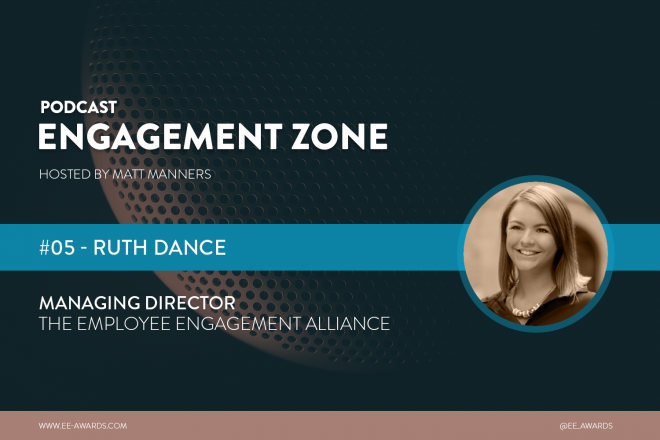
23rd January 2024
Embracing the Midwinter Blues: Elevating Employee Experience

As the mid-winter blues set in, employers are encouraged to prioritize their employees’ well-being and productivity. The post-holiday period can be challenging, leading to dissatisfaction and even quitting for many workers. To combat this, companies should focus on improving the overall employee experience. Addressing issues such as workload management, digital transformation, and digital collaboration tools can reduce stress and burnout, enhancing job satisfaction. Moreover, businesses should embrace digital-first approaches to enhance stability and customer satisfaction. By integrating CRM solutions and automation, companies can streamline operations, improve market intelligence, and provide personalized customer interactions, ultimately creating a more positive and productive work environment throughout the year.
From the original article written by MH Contributor and published in Minutehack:
Employers should ensure that they support employees with an enjoyable, productive experience, at this time of year.
Forget Blue Monday. What about the blue month, the blue season? It’s mid-winter, transport strikes abound, and the joyousness of Christmas is behind us. It is a tough time of year generally, which is why a travel company invented Blue Monday to sell more holidays. It was a smart idea, and it’s got a grain of truth in it, too, even if the science is suspect.
Employers should ensure that they support employees with an enjoyable, productive experience, at this time of year. This doesn’t mean gimmicks, a day off, or a treat – though employees appreciate those, too. Making meaningful changes to the working environment is much more sustainable and productive.
Where employees face a poor working environment it makes the experience far less enjoyable on top of the lack of daylight, warm weather, and stretched personal finances. Research reported in previous years by various sources shows that January 31st has been a popular day to quit. It’s all connected.
So, in addition to responsible people management and care, managers should ensure that carrying out work is not itself challenging. Common complaints of wasting time on administration and logistics, ‘work around work’, show that digital transformation has not been fully embraced.
Below, these thought leaders illustrate how some of the most frustrating experiences can be solved and suggest that by demonstrating that a business is digitally mature, it can also be respectful of the way its employees do their jobs – offering greater agency, and time spent on what matters. These cover the employee experience, the business experience, and finally, the data that supports revenue growth.
Hiring and resourcing for a balanced experience – Bukki Adedapo, UK Country Manager, Fiverr
It’s important to reflect on what may be causing feelings of discontentment – and why they may linger far beyond ‘Blue Monday’. In many cases, unmanageable workload is a key driver of stress and anxiety for workers. Recent research from Fiverr found that over half (52%) of UK workers experienced burnout – akin to chronic workplace stress. That is not something that a short break over Christmas can necessarily solve, so it’s no surprise that so many workers still feel low in January.
- One of the simple solutions for burnout is ensuring there is enough resource for the workload. Yet hiring more staff is not always at the top of businesses’ lists. One reason for this is because in many companies, particularly those that work on a project basis, workloads can be hard to predict. This is why we are seeing 4 in 10 UK companies increasingly working with freelancers to fill the talent gap at speed, with 60% saying the primary aim is to reduce employee burnout in 2024.
Make a stress-free, seamless employee experience – Violeta Martin, VP Commercial Sales EMEA, DocuSign
Some technologies aim to help people do more with less, while others free the user’s time and sanity, saving them from admin, toil and stress – some of the ingredients of burnout. Firms looking to support their staff with tools that improve the employee experience and a better work-life balance should consider the following elements of a digital-first environment.
- Use digital collaboration tools. These allow teammates to connect and collaborate easily. Consider the difference between emailing files and struggling to keep versions correct, versus working at the same time in a cloud-based document. The latter, modern experience, saves time and reduces the headache of getting work done accurately and on time. There are many types of collaboration solutions, from instant messaging and video calling to productivity suites allowing simultaneous working in documents, presentations, video editing, and more. And not to forget, going digital reduces the amount of paper and therefore wasted time getting information to collaborators, customers, and suppliers to make deals, hires, and all agreements happen.
- Cloud-based tech is scalable as a business flexes, lowering the cost of use. It’s also a lot more secure than traditional business processes, while being laptop and mobile-friendly, allowing workers more freedom and autonomy in how they get work done. The freedom from toil, and the ease of doing what really matters make a real impact on the job experience and lower the risk of struggling due to other aspects, like commuting, finding information, or having data analytics resources at hand when needed.
- Digital solutions, like, for example, eSignature tools that make it simple for employees to share, and for customers to sign agreements, are the future of doing business. Cloud based end-to-end systems allow a sales, accounting, or legal worker to quickly ready contracts and get everything signed on the bottom line, removing stress and speeding action.
A more stable digital experience – Mandi Walls, DevOps Advocate, PagerDuty
Digital resiliency increases stability for workers and improves customer satisfaction. It’s not only the business that improves from learning and implementing lessons from incidents and their resolution. Employees can use these processes to learn new skills in critical thinking and problem solving.
- Adapt the business to digital-first without turbulence. A major challenge for businesses is how to manage their ongoing transition to being digital-first, while also retaining operational resiliency and supporting customer experience at the same time. It’s a great time to get started. GenAI promises to be the missing link between IT and customer success, enabling stakeholder communications and process automation for faster resolution of incidents – and learning from them. An ‘operations platform’ helps organisations manage their planned and unexpected IT work.
- Be brave and add AI into business operations. AI and automation can support busy operational and customer service teams and alleviate crowded, legacy, technology stacks to minimise downtime. AI can also help manage the risks from complex IT, cybersecurity threats, and human error, as firms adopt new technologies. A helping guide rail allows your experts to focus on what really matters.
- Use technology to create an environment that acts against fatigue and burnout. Clear, solid processes, and digital maturity and resilience, support a better experience. Incident responders and customer support don’t have to pivot between tools, sift through noise, and troubleshoot irrelevant incidents to do what matters most when they have the right analytics and automation triaging, reducing false alerts, and getting them the context they need to fully understand the situation.
Read the full article Blue month: Make Employee Experience A Focus In The Dreary Midwinter and find out the last tip from Sean Evers, VP Sales & Partner, Pipedrive.





